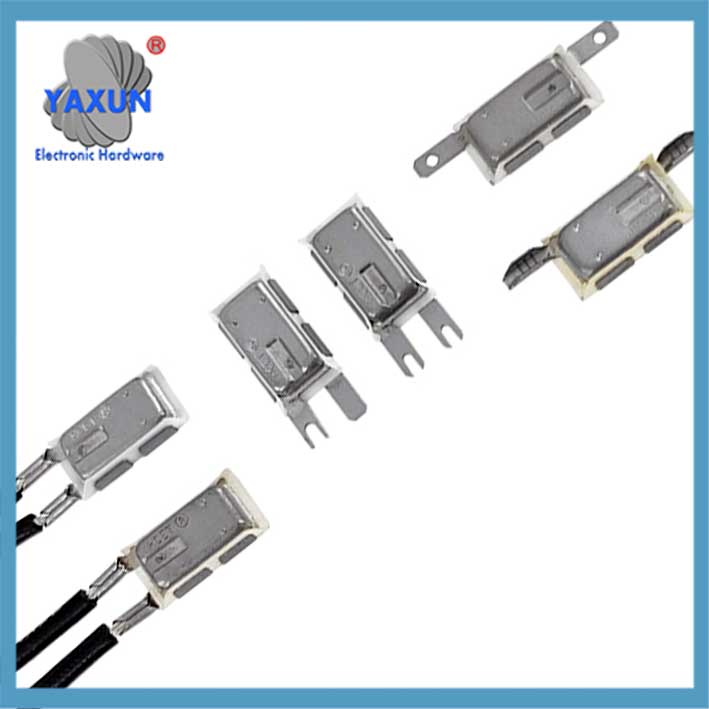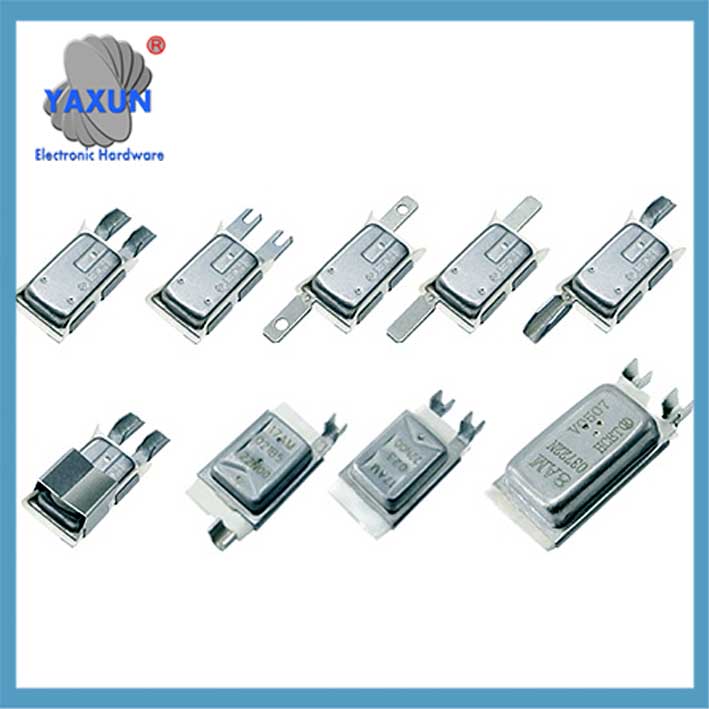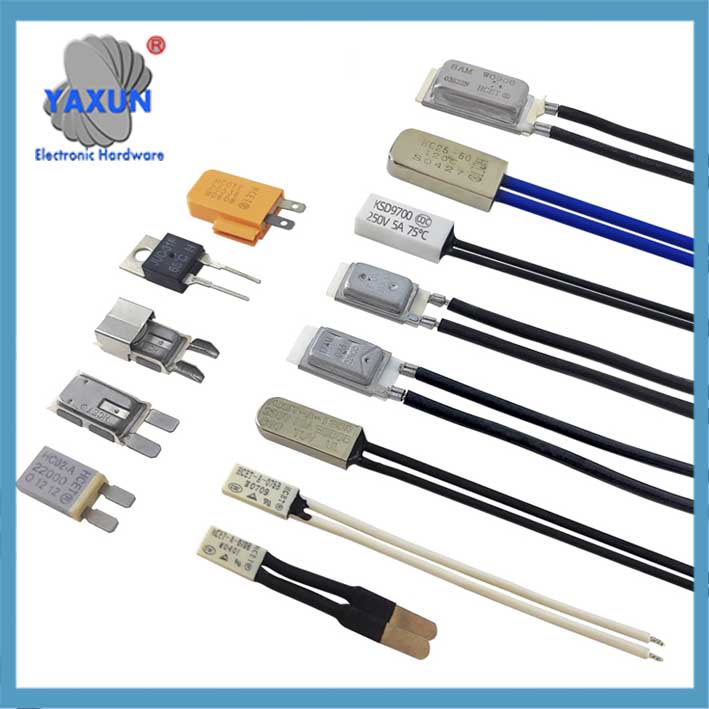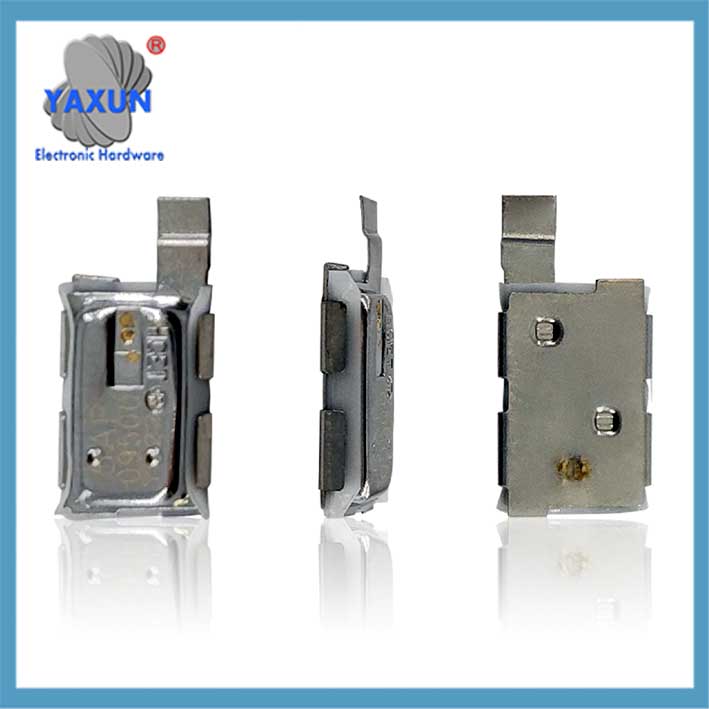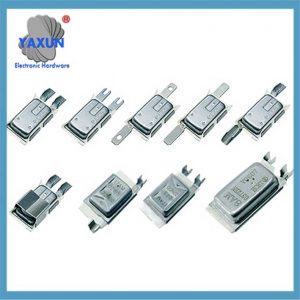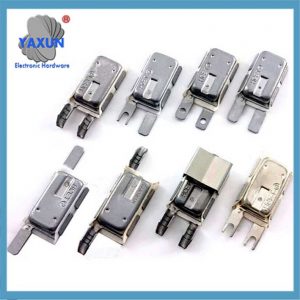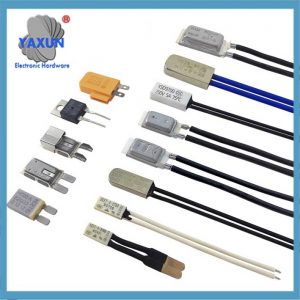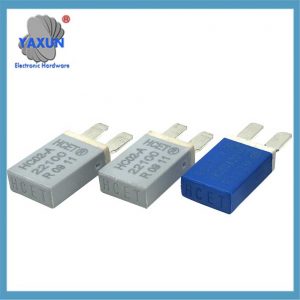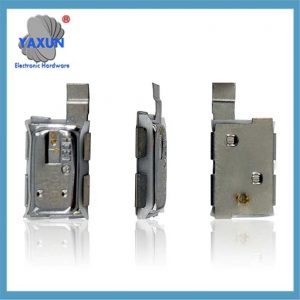Danh mục sản phẩm
- cầu chì nhiệt 32
- cầu chì gắn trên bề mặt 12
- nhiệt điện trở 36
- Giá đỡ cầu chì gắn PCB 27
- Dây nịt dây điện 6
- Giá đỡ cầu chì lưỡi 17
- máy điều nhiệt 50
- Cầu chì điện 24
- Cảm biến nhiệt độ ô tô 7
- Bộ ngắt mạch nhiệt 22
- Hộp đựng cầu chì 36
- Cảm biến nhiệt độ 75
- Công tắc nhiệt 68
- Cầu chì ô tô 20
- Cầu chì chốt xuống 8
Thẻ sản phẩm
Bộ bảo vệ nhiệt động cơ tùy chỉnh (Công tắc điều nhiệt)
Động cơ được bảo vệ nhiệt được trang bị thiết bị an toàn sẽ tắt nguồn điện nếu nhiệt độ của động cơ vượt quá giới hạn an toàn., ngăn ngừa thiệt hại do quá nóng. Tính năng bảo vệ này thường được tích hợp sẵn trong động cơ và là tính năng phổ biến trong nhiều ứng dụng khác nhau., bao gồm cả thiết bị công nghiệp, hệ thống HVAC, và thậm chí cả đồ gia dụng.
The motor thermal protector is a protective device that automatically cuts off the circuit through temperature or current changes. The core function is to prevent the motor from being damaged by overheating, overload or stalling. The following are the key points:
⚙️ 1. Core working principle
Bimetallic strip structure: It is composed of two metal strips with different thermal expansion coefficients. Khi nhiệt độ tăng, the metal strips bend and deform due to the expansion difference, triggering the mechanical linkage to cut off the circuit; it automatically resets and resumes conduction after the temperature drops.
Current-temperature dual response: Some models (such as three-phase thermal protectors) monitor current overload and winding temperature at the same time. When overloaded, the circuit is quickly cut off within 4-10 seconds to avoid stall damage.
Cách nó hoạt động:
Overheating Detection:
Thermally protected motors typically use temperature sensors, such as PTC thermistors or KTY sensors, which are embedded within the motor windings. These sensors monitor the temperature of the motor and send signals to a thermal protection device.
Power Cutoff:
When the motor’s temperature rises beyond the safe limit, the thermal protection device, which can be a bimetallic switch or a similar mechanism, disconnects the power supply, shutting down the motor.
Automatic Restart:
After the motor cools down, the thermal protection device typically resets, allowing the motor to be restarted manually or automatically.
Benefits:
Prevents Damage:
Thermal protection helps prevent overheating, which can lead to damage to the motor’s insulation, windings, and other components.
Extends Lifespan:
Bằng cách ngăn ngừa quá nhiệt, thermal protection contributes to a longer lifespan for the motor.
Sự an toàn:
It minimizes the risk of fire or other hazards caused by motor overheating.
🔍 2. Main types and technological evolution
| Kiểu | Nguyên tắc làm việc | Đặc trưng | Kịch bản áp dụng |
| Bimetallic thermal protector | Temperature-triggered metal sheet bending | Simple structure, chi phí thấp, tự động thiết lập lại, but accuracy is affected by material ratio | Household appliance motors, small industrial motors |
| Electronic protector | Chip detection current/temperature signal | Độ chính xác cao, programmable protection curve, support remote monitoring, but requires a matching controller | Intelligent industrial equipment, precision motors |
| Three-phase thermal protector | Comprehensive current overload and overheating protection | Support 0.55kW-75kW motors, strong resistance to polluted environments, can replace the traditional “thermal relay + contactor” solution | Industrial motors, máy bơm chìm |
Ghi chú: Tianyin Electromechanical’s patented technology significantly improves response reliability by optimizing the combined structure of bimetallic strips (such as adding overcurrent protection components).
📌 3. Key selection parameters
| Thông số | Requirements | Base |
| Nhiệt độ hoạt động | 40°C–170°C (customized according to motor insulation level) | Need to match the motor winding temperature limit |
| Đánh giá hiện tại | 2A–20A (selected according to motor power) | Prevent false triggering or protection failure |
| Reset mode | Đặt lại tự động/đặt lại thủ công | Automatic reset is suitable for refrigerators and fans; manual reset is used for high-risk scenarios |
| Certification standards | TS16949、UL、CE(EN 60730-2-2) | Mandatory safety and environmental protection requirements |
⚠️ 4. Precautions for use
Installation specifications:
The lead bending must be more than 6mm away from the root to avoid damage and poor contact;
After high-temperature welding, it must be cooled for more than 30 seconds to prevent the protector from being damaged by heat.
Khả năng thích ứng với môi trường:
Avoid using non-sealed protectors (such as traditional contactors) in highly polluted environments;
Regularly check the fatigue and aging of bimetallic strips and replace them in combination with the equipment maintenance cycle.
Function conflict avoidance:
Automotive motors with anti-pinch function need to adopt software temperature control solutions to avoid hardware protectors interfering with obstacle detection.
♻️ 5. Troubleshooting
Common reasons why the motor burns but the protector does not operate:
Wiring error: The protector is not connected in series in the main circuit of the motor;
Set value is too high: The action temperature or current threshold setting exceeds the motor tolerance range;
Response delay: The bimetal strip requires heat accumulation time and cannot cope with instantaneous short-circuit faults.
It is recommended to give priority to products that have passed the short-circuit test (Clause 18.101) specified in the GB/T 14536.3-2022 standard to ensure reliability under extreme working conditions.
Liên hệ với chúng tôi
Đang chờ email của bạn, chúng tôi sẽ trả lời bạn trong vòng 12 giờ với thông tin có giá trị bạn cần.
 English
English Afrikaans
Afrikaans العربية
العربية বাংলা
বাংলা bosanski jezik
bosanski jezik Български
Български Català
Català 粤语
粤语 中文(简体)
中文(简体) 中文(漢字)
中文(漢字) Hrvatski
Hrvatski Čeština
Čeština Nederlands
Nederlands Eesti keel
Eesti keel Suomi
Suomi Français
Français Deutsch
Deutsch Ελληνικά
Ελληνικά हिन्दी; हिंदी
हिन्दी; हिंदी Magyar
Magyar Bahasa Indonesia
Bahasa Indonesia Italiano
Italiano 日本語
日本語 한국어
한국어 Latviešu valoda
Latviešu valoda Lietuvių kalba
Lietuvių kalba македонски јазик
македонски јазик Bahasa Melayu
Bahasa Melayu Norsk
Norsk پارسی
پارسی Polski
Polski Português
Português Română
Română Русский
Русский Cрпски језик
Cрпски језик Slovenčina
Slovenčina Slovenščina
Slovenščina Español
Español Svenska
Svenska ภาษาไทย
ภาษาไทย Türkçe
Türkçe Українська
Українська اردو
اردو Tiếng Việt
Tiếng Việt

